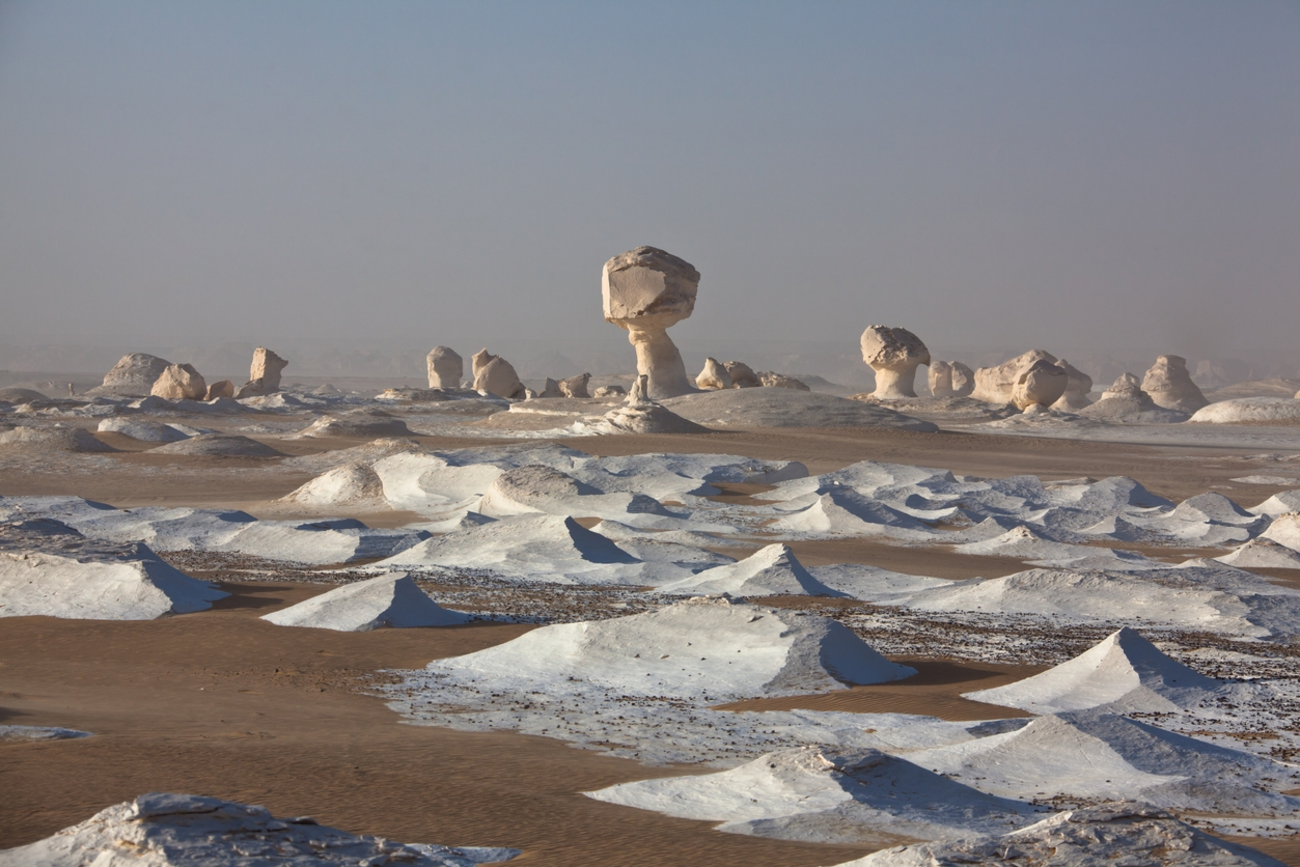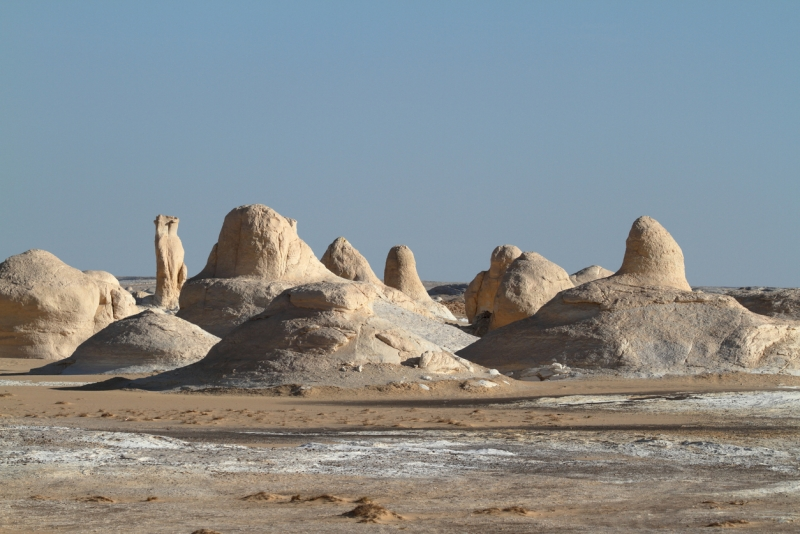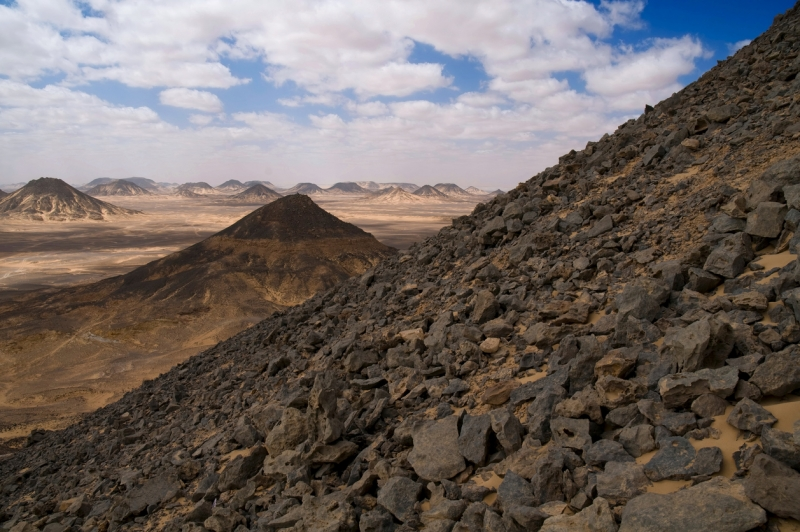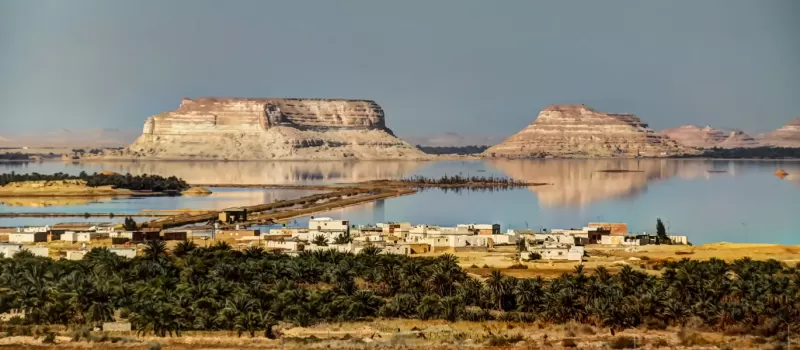Western Desert and Oases Egypt

Egypt’s Western Desert is a vast, mysterious land covering two-thirds of the country. Despite its harsh, arid nature, it hides underground aquifers that gave rise to life-sustaining oases, where people thrived for thousands of years. From the towering dunes of Gilf Kebir to the unique Great Sand Sea, the desert blends breathtaking landscapes with deep history—highlighted by discoveries like the Valley of the Golden Mummies.
Understanding the Western Desert’s terrain
The Western Desert terrain of Egypt presents the sort of thing I love - a geological puzzle that spreads across a big expanse. This region starts at the Nile Valley and runs west to the Libyan border. It extends about 680 km from north to south and 700 km from east to west. The desert takes up roughly 680,650 square kilometers, which makes up about two-thirds of Egypt's total land.
Boundaries and size of the region
A natural boundary forms between Egypt and Libya through the Western Desert, which also shares a border with Sudan to the south. The Western Desert is by a lot larger than the Eastern Desert's 221,900 square kilometers. The Mediterranean coast marks its northern edge, while the Nile River traces its eastern boundary. This massive area includes about 262,800 square miles of mostly sandy terrain with rocky outcrops scattered throughout.
Elevation and plateaus
The Western Desert’s landscape isn’t flat but broken by striking plateaus and vast dunes. The Gilf Kebir plateau soars over 1,000 meters, while the Great Sand Sea—shaped like a lung—spreads across 72,000 square kilometers with dunes rising more than 100 meters, forming a dramatic and complex terrain.
The Qattara Depression and Fayyum
The Qattara Depression, one of Africa’s largest, sinks 133 meters below sea level and spans 19,500 square kilometers, its salt pans and marshes making it uninhabitable. In contrast, the nearby Fayyum Oasis—45 meters below sea level and linked to the Nile by Bahr Yusuf—offers fertile land that has supported life since ancient times

Natural wonders of the Western Desert
The White Desert, famed for its otherworldly beauty, is one of Egypt’s most unique and breathtaking geological wonders.
The Great Sand Sea and its dunes
The Great Sand Sea, stretching 72,000 km² between Egypt and Libya, is a vast desert of towering dunes over 100 meters high, forming stunning wave-like patterns that resemble a frozen ocean of sand.
The Black Desert: Volcanic history
The enigmatic Black Desert stretches between Bahariya and Farafra Oases. Its volcanic-inspired mounds extend over approximately 30 kilometers. These unique formations reach heights of up to 100 meters and display a fascinating mix of colors—surfaces that range from dark iron quartzite to reddish iron sandstone. Ancient volcanic eruptions of dark volcanic dolerite from the Jurassic period, roughly 180 million years ago, gave this region its distinctive black color. Al-Marsous Mountain's crater-type formation gives visitors panoramic views of the entire Black Desert.
The White Desert: Wind-sculpted chalk
The White Desert became a national park in 2002 and stands as nature's sculptural masterpiece. This surreal landscape sits within the Farafra depression about 45 kilometers north of Qsar El Farafra. Wind and sand erosion have carved spectacular white chalk rock formations over millions of years. Calcium carbonate and silica deposits create the area's distinctive white coloration, remnants of an ancient dried-up seabed. Visitors can explore whimsical shapes that look like mushrooms, columns, and other intriguing forms throughout the 300 km² protected area.
Gilf Kebir and prehistoric cave art
The majestic Gilf Kebir plateau rises nearly a thousand feet in southwestern Egypt. Hungarian explorer László Almásy found the famous "Cave of Swimmers" in 1933. The cave features human figures with limbs that appear to be swimming. These fascinating paintings are 8,000-9,000 years old and show that the Sahara was once a lush savannah instead of a desert. Scientists have confirmed that lakes existed in this region, which supported the diverse ecosystem shown in these ancient artworks. The area continues to yield archeological treasures, including the "Cave of Beasts" found in 2002.

Oases and human settlement through time
Desert oases have thrived for thousands of years in Egypt's Western Desert. These green havens serve as safe spots for travelers and permanent settlements that helped write the region's history.
How oases form in the desert
Natural springs create oases when underground water reaches the surface. Deep aquifers push water up through porous limestone until it emerges as springs. This happens in low-lying areas where groundwater sits close to the surface. These areas become deeper through erosion until they touch underground water sources. The Nubian Sandstone Aquifer feeds the Western Desert oases. This limited water source built up between 20,000 and 5,000 years ago when the Sahara had more rainfall. The fossil water creates rich soil that supports farming and human communities.
Siwa to Kharga: A chain of life
The Western Desert's oases create a unique arc from Siwa in the northwest to Kharga in the south. Each oasis has developed its own character:
- Siwa: This oasis sits just 50 km from Libya's border. It features 200 natural springs in a depression 19 meters below sea level. The ancient fortress of Shali Ghadi stands as proof of desert building techniques, built from salt and mud-brick (kershef).
- Bahariya: The Wahatis tribe calls this place home. More than 400 mineral and sulfur springs have made it a farming hub since the Middle Kingdom period (2050-1710 BCE).
- Farafra: Hot springs dot this landscape that leads to the White Desert.
- Dakhla: Rich olive groves and palm forests thrive here alongside 500 hot water springs.
- Kharga: The most modern oasis sits at the southern end, placed perfectly along old trade routes.
Ancient Egyptian and Roman presence
People have lived in the Western Desert oases since prehistoric times. Under Egypt’s pharaohs, especially Pepi I and II, governors managed these lands, and the Darb El Arba‘īn linked Kharga to Sudan. Later, the Romans integrated the region into Libya Inferior, building fortresses, farms, and well-planned settlements to protect trade routes.
Modern communities and agriculture
Today, oasis communities face water challenges, with farmers digging deeper wells and battling rising salinity that affects date yields. Still, they grow crops like dates, olives, and apricots, while modern methods such as drip irrigation help conserve water. Tourism also boosts the economy, with visitors drawn to natural wonders, ancient sites, and therapeutic hot springs.

Customize Your Dream Vacation!
Get in touch with our local experts for an unforgettable journey.
Plan Your Trip
From ancient myths to modern projects
The Western Desert of Egypt stands as a testament to countless legends and human achievements through the ages.
The Lost Army of Cambyses
Persian king Cambyses II sent 50,000 soldiers to destroy the Oracle of Ammon at Siwa Oasis in 525 BC. Herodotus tells us this massive army disappeared completely after a devastating sandstorm struck. Many search teams have looked for traces of the army. Hungarian explorer László Almásy and the Castiglioni brothers searched extensively. The brothers claimed they found human remains and Persian-era artifacts near Siwa in 2009. Some researchers believe the army met its end in battle rather than getting buried in sand.
WWII and the Western Desert Campaign
The Western Desert became a vital WWII battleground from June 1940 to November 1942. British and Commonwealth forces faced off against Italy and Germany in this intense campaign. Italy started the conflict by invading Egypt in September 1940. German forces joined under General Erwin Rommel's command in February 1941. The Allied forces won decisive victories at El Alamein and emerged victorious in November 1942.
The Toshka Project and desert greening
Egypt breathed new life into the Toshka Project in October 2020. The government allocated 6.4 billion Egyptian pounds (USD 413 million) to create a new delta in the Western Desert. This bold plan aims to transform desert areas into farmland. The project could expand Egypt's agricultural land by 40%. It uses Nile water through pumping stations to help solve population density issues in Egypt's traditional settlements.
Tourism, conservation, and future potential
The Western Desert has grown into a popular tourist destination for Egypt Tours with activities spread across Egypt's chain of oases. Many experts suggest focusing on desert tourism instead of agriculture. They believe this approach could bring higher revenues while protecting delicate ecosystems. This strategy helps balance economic growth with the preservation of the region's natural treasures.
If you’re exploring Egypt’s Western Desert, you’ll come across its five famous oases: Siwa, Bahariya, Farafra, Dakhla, and Kharga. Each oasis has its own personality — Siwa is known for its salt lakes and date palms, Bahariya for the Black Desert nearby, and Farafra for the White Desert’s chalk formations. Dakhla and Kharga, further south, are rich in history and stunning landscapes.
The oases weren’t just patches of green in the desert — they were lifelines. In ancient times, they became trade hubs and agricultural centers, keeping caravans alive on long journeys across the Sahara. If you imagine traveling through the Western Desert back then, these oases were the places where life could flourish thanks to their water and fertile land.
When you visit the Western Desert of Egypt, you’ll find some of the most surreal landscapes on Earth. The Great Sand Sea stretches endlessly with towering dunes, the Black Desert has volcanic-looking hills, the White Desert stuns with its wind-carved chalk formations, and the Gilf Kebir plateau hides prehistoric cave art. It feels like stepping into another world.
Water is the most precious resource here. Today, oasis communities are facing challenges because ancient aquifers are running low. You’ll notice how farmers in places like Siwa and Dakhla are turning to modern techniques like drip irrigation to save water while still growing olives, dates, and other crops. It’s a balance between tradition and survival in the desert.
If you’ve heard of the Toshka Project, you know it’s one of Egypt’s biggest modern desert projects. The government is working to transform parts of the Western Desert into farmland by diverting Nile water. The goal is to expand Egypt’s cultivable land by nearly 40% and relieve overcrowding in the Nile Valley. For you as a traveler, it shows how Egypt is still finding new ways to live with and shape its desert environment.












